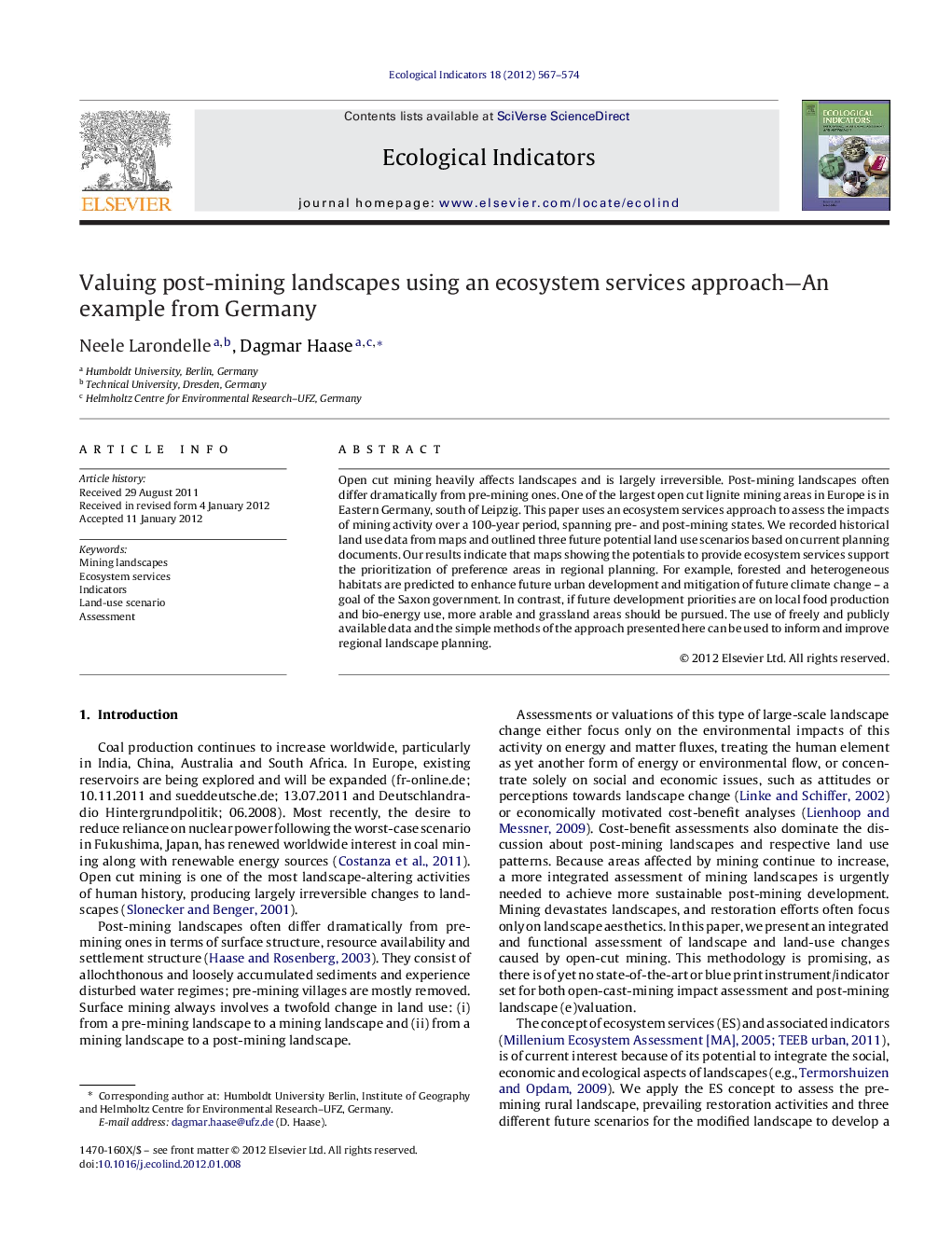| Article ID | Journal | Published Year | Pages | File Type |
|---|---|---|---|---|
| 4373814 | Ecological Indicators | 2012 | 8 Pages |
Open cut mining heavily affects landscapes and is largely irreversible. Post-mining landscapes often differ dramatically from pre-mining ones. One of the largest open cut lignite mining areas in Europe is in Eastern Germany, south of Leipzig. This paper uses an ecosystem services approach to assess the impacts of mining activity over a 100-year period, spanning pre- and post-mining states. We recorded historical land use data from maps and outlined three future potential land use scenarios based on current planning documents. Our results indicate that maps showing the potentials to provide ecosystem services support the prioritization of preference areas in regional planning. For example, forested and heterogeneous habitats are predicted to enhance future urban development and mitigation of future climate change – a goal of the Saxon government. In contrast, if future development priorities are on local food production and bio-energy use, more arable and grassland areas should be pursued. The use of freely and publicly available data and the simple methods of the approach presented here can be used to inform and improve regional landscape planning.
Graphical abstractFigure optionsDownload full-size imageDownload as PowerPoint slideHighlights▸ Open cut mining heavily affects landscapes and is a largely irreversible impact. ▸ The paper uses an ecosystem services (ES) approach to assess the impacts of mining activities and post-mining restoration options. ▸ Nine relevant ES were modelled using easy to handle empirical models. ▸ The results show clear evidence of the ecological potential (recreation, food production, water regulation) of restored landscapes. ▸ The ES approach is both suitable and flexible for supporting state regional planning.
